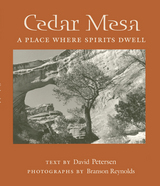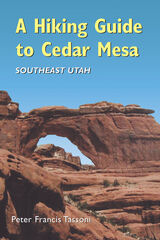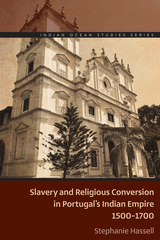2 books about Cedar Mesa

Cedar Mesa
A Place Where Spirits Dwell
Text by David Petersen; Photographs by Branson Reynolds
University of Arizona Press, 2002
High on the Colorado Plateau lies a uniquely magical desert place: a land of sandy mesas and slickrock escarpments, an elegant maze of vertical-walled, vertigo-inspiring canyons plunging to darkened depths. Cedar Mesa, Utah, is a place frozen in time. A land that can only be adequately explored on foot or horseback, Cedar Mesa offers adventurous visitors magnificent examples of all the topographic and geologic wonders that define "canyon country" throughout the Southwest: stone arches, natural bridges, and breath-sucking precipices, plus hidden springs, hanging gardens, and a treasure of pre-Columbian Indian ruins. Now a writer and a photographer who have roamed the Mesa for more than twenty years—and know many of its well-guarded secrets—offer an intimate look at a place where solitude and silence go hand in hand. Animated by towering "hoodoos"—sandstone formations eroded to resemble all manner of spooky beings—Cedar Mesa is, in David Petersen's words, "an undulating expanse of erosion-sculpted slickrock like petrified ocean swells." He and Branson Reynolds share insights into the natural and human history of the region; they provide a panoramic overview of the Mesa, then take readers on a personally guided descent into the canyons, where hikers can expect to encounter wildlife, prehistoric ruins, stone sculptures, and hidden pools. While providing details regarding much-visited locales, Petersen and Reynolds are more concerned with conveying an overall sense of the area's mystical beauty—capturing the spirit of ancestral Puebloan cliff dwellings but keeping their locations secret so that their magic will not be lost. With its relative lack of roads, campgrounds, and maintained trails, Cedar Mesa is an Eden for personal discovery and hands-on adventure. But "be it known," advises Petersen, "that this is not yet another hand-holding, give-it-all-away, chamber-of-commerce-style 'backcountry' guidebook, of which there are far too many already." He and Reynolds have instead fashioned a book to celebrate and interpret "one of the most palpably spiritual natural places remaining on the American continent"—and to instill in readers the importance of protecting it forever.
[more]

A Hiking Guide To Cedar Mesa
Peter Francis Tassoni
University of Utah Press, 2001
The Cedar Mesa country in southeast Utah is a land of convoluted cliffs with arches, natural bridges, hoodoos, spires, hat rocks, ledges, and alcoves. It is a land of flash floods and extreme temperatures that demands much from those who would explore it. It is also an unparalleled museum of geological features and ancestral Puebloan culture. This fascinating culture flowered for more than a millennium and visitors to southeast Utah are treated to a sampling of archaeological wonders.
A Hiking Guide to Cedar Mesa describes sixty-three routes, ranging from quarter-mile walks to fifteen-mile day hikes, loops, and multi-day backpack trips. There is essential information on permits, weather, gear, road, trailhead access, geology, human history in the region, and leave-no-trace camping.
Care is given to name only those well-known archaeological sites that are visible or immediately accessible from roads. Throughout, the author emphasizes proper visitation protocol for fragile archaeological sites. He states, "I have been touched by this landscape and would prefer to keep its teachings and secrets to myself, but I cannot. The experience of the desert should be available to everyone with the motivation to encounter it."
A Hiking Guide to Cedar Mesa describes sixty-three routes, ranging from quarter-mile walks to fifteen-mile day hikes, loops, and multi-day backpack trips. There is essential information on permits, weather, gear, road, trailhead access, geology, human history in the region, and leave-no-trace camping.
Care is given to name only those well-known archaeological sites that are visible or immediately accessible from roads. Throughout, the author emphasizes proper visitation protocol for fragile archaeological sites. He states, "I have been touched by this landscape and would prefer to keep its teachings and secrets to myself, but I cannot. The experience of the desert should be available to everyone with the motivation to encounter it."
[more]
READERS
Browse our collection.
PUBLISHERS
See BiblioVault's publisher services.
STUDENT SERVICES
Files for college accessibility offices.
UChicago Accessibility Resources
home | accessibility | search | about | contact us
BiblioVault ® 2001 - 2025
The University of Chicago Press









